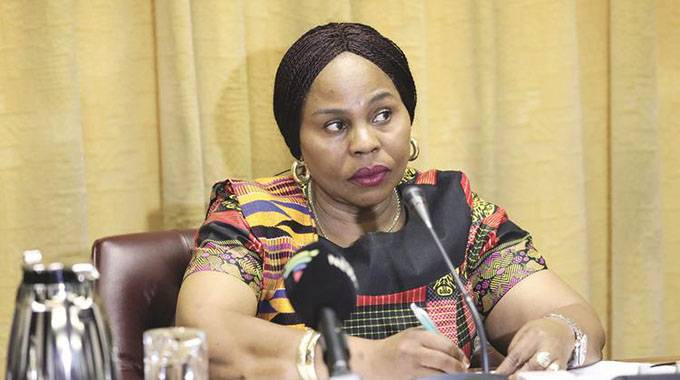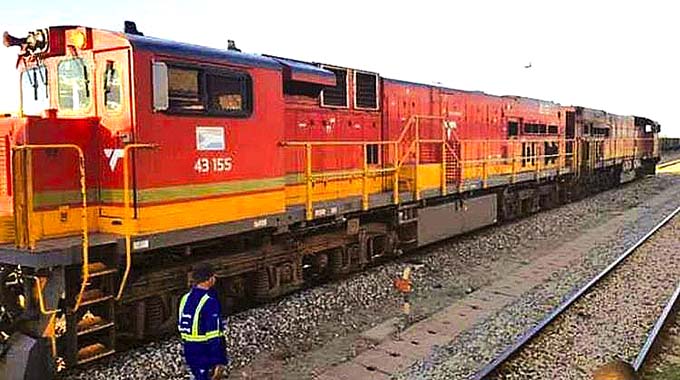50 km railway line connecting US$1 bln steel project on cards
Dinson Iron and Steel Company (Disco) and the National Railways of Zimbabwe (NRZ), are engaged in high level discussions for the construction of a 50-kilometre railway line from Mvuma to the US$1 billion steel plant in Manhize, Chivhu.
Disco is a subsidiary of the giant Chinese steel producer, Tsingshan Holdings. The firm is building Africa’s biggest integrated steel manufacturing plant whose first blast furnace is expected to be switched on in September next year.
The integrated steel project that comprises a carbon and steel plant, an iron ore mine and a ferrochrome plant which is poised to produce 1,2 million tonnes of iron and steel annually, is expected to create over 10 000 jobs directly.
Disco project manager, Wilfred Motsi, said his organisation was currently doing a feasibility study for the railway line to link Mvuma and the steel plant.
“So, far we have got engagements with NRZ and we have got options whether to construct the railway line as a joint venture between ourselves and NRZ or construct it on our own.
“We also have the option to have NRZ build the railway line but knowing that NRZ has got resource constraints, we will have to chip in,” he said, adding that they would also upgrade a road network in Mvuma to improve connectivity to the plant.
“We are also going to upgrade a road network in Mvuma and also, we have entered into a partnership with Zinwa (Zimbabwe National Water Authority) for the construction of a dam, which will supply water to the steel plant as well as benefiting the new town that is coming up,” said Motsi.
NRZ general manager, Respina Zinyanduko said; “There is a lot that is ongoing regarding efforts to capacitate NRZ to prepare it to offer uninterrupted service for this big potential customer.
“The two companies held meetings wherein it was agreed that Dinson will construct a private siding line to connect at the NRZ Mvuma siding.
“Discussions were also held regarding rolling stock and traction power requirements and how the two companies can work together for best bulk transportation services to be guaranteed.”
Industrialists and economic commentators said given the pace at which the steel project was being constructed, authorities should move with speed in capacitating NRZ so that its efficiency matches with production at Manhize.
The Confederation of Zimbabwe Industries (CZI) president, Kurai Macheza, welcomed the development of a new steel plant but hastened to point out that the operational challenges that NRZ was grappling with need to be attended expeditiously.
“Obviously, the coming up of the steel plant in Mvuma is a good development for the country, as an industry, we really welcome that development as it also fosters infrastructural development. As Africa’s largest integrated steel plant, it will focus on domestic, regional and international markets and this entails th t it will be exporting.
“What this entails is that there is a need for authorities to capacitate NRZ in terms of rail infrastructure so that its efficiency matches with the huge volumes of heavy cargo that would require rail transport as a mode of transportation,” he said.
At its peak in the 1990s, NRZ moved 18 million tonnes of freight annually.
Last year, NRZ moved 2. 191 million tonnes of cargo against a target of three million tonnes.
The projected freight was weighed down by factors such as Covid-19-induced operational challenges, unreliable locomotive and wagon shortages, and dilapidated rail network that resulted in frequent derailments.
“As the steel plant in Mvuma comes on board, our understanding is that there will be bulk movement of cargo ranging from coal, iron ore and coke, among others to the blast furnace. Also there will be bulk movement of manufactured steel products destined for the local and export markets through Beira or Maputo. This means there should be an efficient rail line from Mvuma connecting into Mozambique to facilitate the shipment of cargo destined for the export markets.
“NRZ also needs to be capacitated in terms of the locomotives and wagons to move raw materials and steel products at Manhize.
“But what we are seeing in terms of NRZ capacitation, they are slower than the putting up of that steel plant,” said Macheza.
Recently, NRZ embarked on a US$3,5 million revamping programme of its rolling stock to improve operational efficiency.
The project includes a US$2 million export-fit wagons refurbishment initiative that commenced in October last year and is expected to save Zimbabwe millions of dollars in foreign currency.
Economist Mercy Shumba, said the Government as the shareholder in NRZ should move with speed in resuscitating the ailing entity.
“If NRZ is not capacitated to match with the business volume that is anticipated from the perationalisation of the Mvuma steel plant, then as a country again we are doomed.
“Transporting steel products from Manhize and raw materials for the plant requires an efficient bulk transporter, so if NRZ is not capacitated, what it therefore means is the cargo will be moved by road. And if that happens, it means we are destroying the road network that we have been rehabilitating, so there will be no infrastructural development in terms of road network to talk about in Zimbabwe,” she said.
“So, the Government needs to up the game when it comes to reviving and capacitating NRZ operational efficiency.”-eBusiness Weekly









